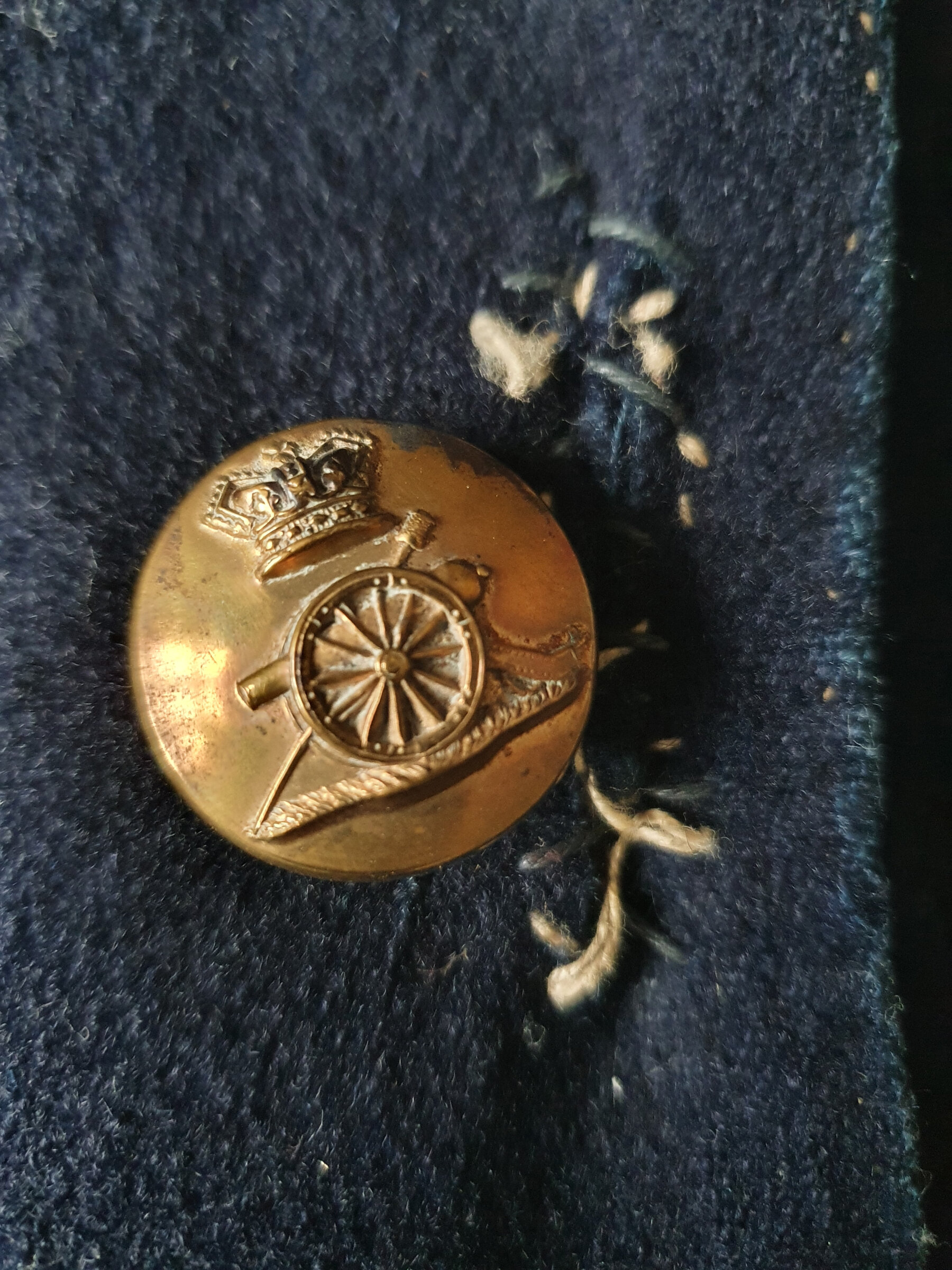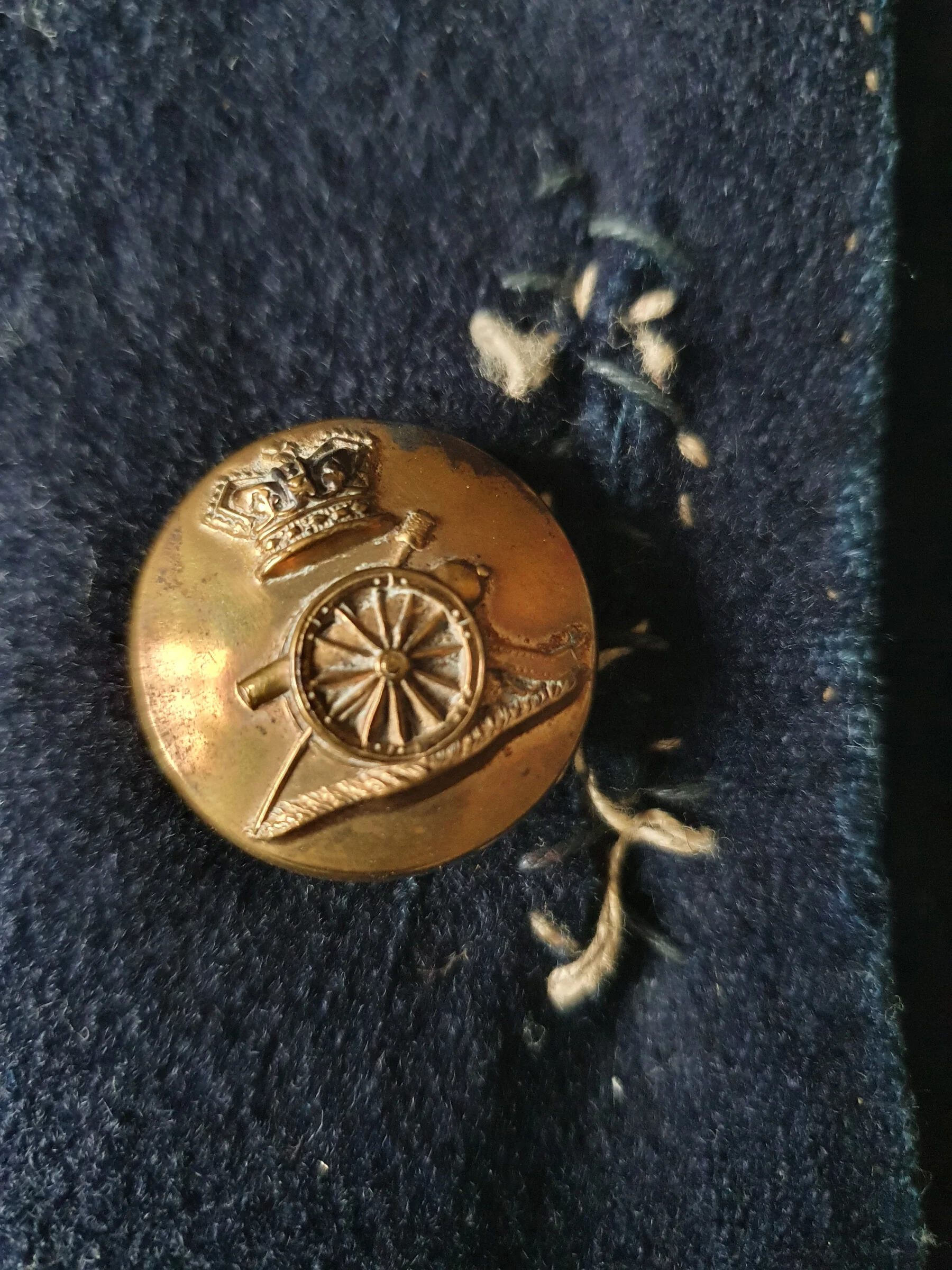
Sustain
Sustain
This collection contains examples of clothes have been repaired, re-worn and refashioned throughout history.
Repairing and making your own clothes has gone out of fashion in more recent times. By looking back at historic garments, such as these, we can relearn a more sustainable attitude towards clothes.
Object in focus: Crimean war greatcoat
A piece by Sue Allenby, Look Again project volunteer.
The team unwrapping and cataloguing the tissue-wrapped costumes in store never know what they will find next. The work is always exciting and sometimes even poignant, such as when we found a tiny milk stain still on the shoulder of a lovely Victorian Christening robe. While we are working and recording in great detail, we cannot help but speculate who it was who wore those racy red Edwardian stockings, or that exquisite silk stomacher, straight out of a Gainsborough portrait!
What is most thrilling of course is that we are unwrapping Salisbury’s history. When we can link our finds to other exhibits in the galleries and even do a little research to create more of the story, then what could be better than that? The team I joined had recently found a military greatcoat, which had been worn throughout the Crimean War by a local soldier. Big and heavy and navy blue with identifiable artillery brass buttons on the coat and on its cape, it was straight out of every artists’ impression of the Battle of Inkerman. The coat was given to the museum in 1976 by Howard Harris’ grand-daughter.
Harris had served throughout the Crimean War and witnessed the Charge of the Light Brigade. Some fifty years later, the Salisbury Times asked him to write his ‘Memories of the Crimea’ for publication in January and February 1908.
Howard Harris had joined E Battery of the Black Horse Royal Artillery and sailed in April 1854 for the Bosphorus. He and his greatcoat suffered through the most dreadful conditions. Having made their way from Turkey to the Crimea he tells us:
“Fancy, 27,000 troops just landed in a strange country without a single tent or covering more than their greatcoat…standing in pitiless rain…no bed, no waterproof…no bit of dry ground to sleep on. To make matters worse my horse had tumbled into the sea on landing with all my kit on its back…”. - Howard Harris, The Salisbury Times, 1908.
Rip repaired by Harris, Howard Harris’ greatcoat, 1854, ©The Salisbury Museum collection
The instalments give a chilling account of the barbarity of that war; the Western European allies fighting the Imperial Russian Army in the Crimea, where they were heavily outnumbered.
The excepts graphically describe the privations of the men, the devastating effects of cholera, and the lack of preparation and provisioning, all told with a soldier’s black humour.
He does not spare his readers his account of the killing fields, including Alma, Balaclava, and Inkerman.
Inkerman, where so many commanders were killed, was known as the Soldiers’ Battle. The first three hours were fought in fog with the British and French troops heavily outnumbered although they eventually won the day.
“At about this time” wrote Harris, having witnessed the deaths of many of his companions, “a large shell from the shipping burst over our heads and a fragment of it struck me on the shoulder and split my greatcoat down the back. I still have the old friend.”
Today, we are fortunate to have in the fashion collection the greatcoat with its original repair. Howard Harris served a further 19 years with the Wiltshire Yeomanry after the war, and in 1897 became Mayor of Salisbury.
On my way home on the day I learned about the greatcoat, I found myself going into the Wardrobe at the top of Salisbury Close to ask about the archives for the Wiltshire Regiment, and then into the Guildhall to look for Howard Harris’ photograph.
by Sue Allenby, Look Again Project Volunteer.
Close up of button, Howard Harris’ greatcoat, 1854, ©The Salisbury Museum collection




